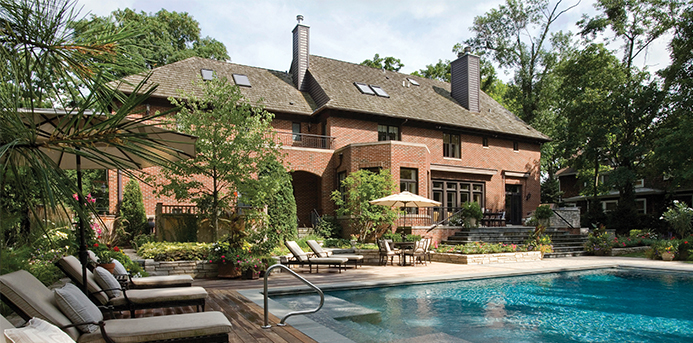For a few glorious months every year, Chicago’s frigid temps become a thing of the past. Here’s how to make the most of your home’s outdoor living space so you can soak up all the sun and warmth you can before the next polar vortex strikes.
Even in a place like Chicagoland where nearly half of the year is inclement, owners of upscale homes are investing in exterior living spaces that rival those indoors, with distinct and decked-out areas for living, dining, cooking, and leisure. “People are inundated with digital everything, so they want their homes to be very restful and an oasis away from their busy lives,” explains landscape architect Robert Milani of Chalet Landscape & Garden in Wilmette.
The shift began about 10 years ago when people began demanding outdoor kitchens and dining areas, says Carrie Woleben-Meade, the director of design at Mariani Landscape. Now those amenities have become “assumed,” she says, with people incorporating pizza ovens, pergolas with deluxe sound systems, and games galore (think foosball, ping-pong, and air hockey). “Parents want their teenagers there, so they can keep an ear open and know what’s going on,” Woleben-Meade says. “The backyard is not just green and pretty anymore.”
Here are some of our favorite ways you can maximize your family’s enjoyment of your home’s outdoor spaces.
1. Don’t skimp on style
Metal garden furniture sets are becoming things of the past, as people increasingly invest in higher-end, often custom upholstered pieces. “What people are trying to do is to bring the inside out by coordinating color schemes, fabrics, rugs, and accessories,” says Michael Schmechtig of Schmechtig Landscapes in Mundelein. “We often work with interior designers on those details.” In fact, drawn to their comfort, style, and durability, many interior designers have begun using outdoor fabrics inside as well.
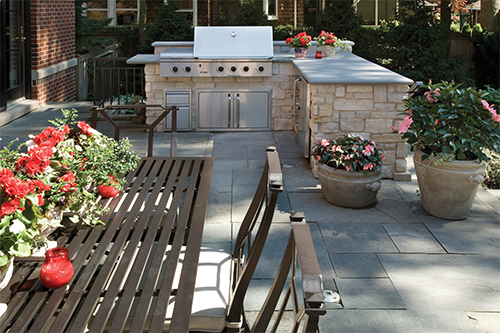
2. Build a she-shed or man-cave
We’ve all heard about man-caves, and now comes the “she-shed,” a place to read, do yoga, meditate, or just relax. A cozy little backyard retreat with electricity will cost anywhere from $5,000 to $15,000 and up, depending on the bells and whistles, Chalet’s Milani says, noting that the pine interiors can be left raw or wood-paneled for a more decorated look. Some even have plumbing.
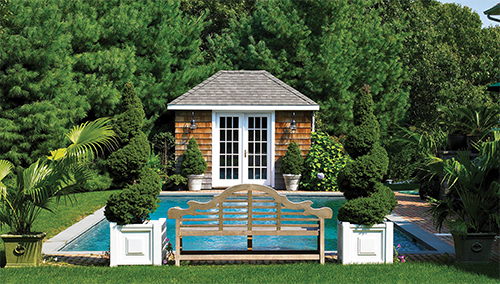
3. Add a fire feature
Incorporating fire features into your outdoor living area is one trend that shows no signs of cooling off. It’s not just a homey focal point: Milani says that there are emotional benefits that come with bringing the heat. For one, it might just improve your relationship with your children. “Once you put a firepit in, you’ll bring your kids out into the landscape,” Milani says, noting that 99 percent of the time, clients tell him it made their family ties stronger. “It’s one of those miracles. If you build it, they will come.”
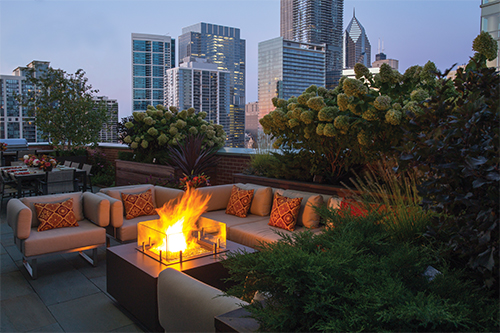
Mariani’s Woleben-Meade likewise utilizes fire features in her designs, both formally as handsome brick fireplaces and informally as rustic firepits. Not only do they offer a striking point of interest, but they also allow people to use the space for longer into the season. “People are investing money in this area, so they want to extend the season as long as possible,” Woleben-Meade says.
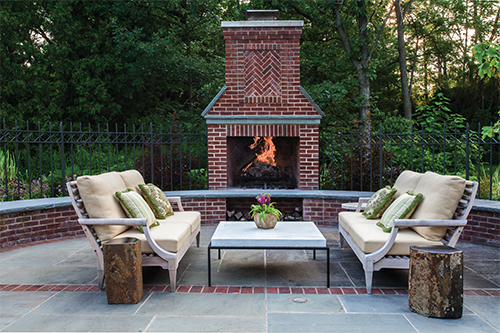
4. Plant herbs and other edibles
Herb gardens are more popular than ever, and it’s easy to see why. After all, fresh herbs elevate even the simplest dish. Make It Better’s dining editor, Julie Chernoff, should know. She has a lovely garden outside her Daniel Burnham-designed home in Evanston that includes rosemary, basil, mint, sage, and two types of thyme. “I use my herbs all summer long and well into the fall,” Chernoff says. “Rosemary stems make fragrant skewers, savory is a must for all dried beans, and I make herb pesto and salsa verde all the time.”
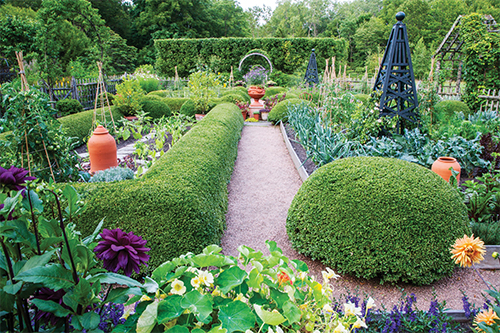
Although vegetable gardens are considered by many to be less attractive, they are also gaining in popularity. Raised gardens allow people with disabilities or issues with bending over to take part in the activity. Vertical gardens are another option, making the most of unused real estate on the side of the house or garage. “You can change out the plants seasonally for variation and diversity, so a vertical garden can give lots of pleasure over the years,” Milani says.
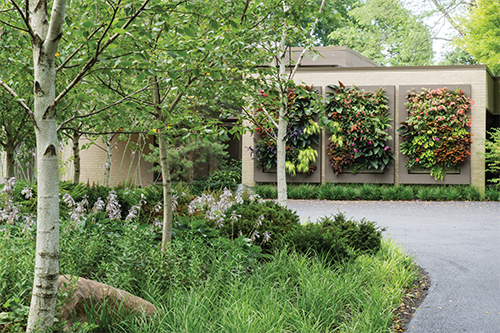
5. Incorporate fountains, streams, and other water features
In a recent North Shore project, Milani included a unique front walkway with floating pavers that pass over a water feature. The serene feature reflects the light, plays home to aquatic plants, and impacts one’s mood as well, Milani says. “Seeing, smelling, and hearing the water creates a Zen-like feeling,” Milani says.
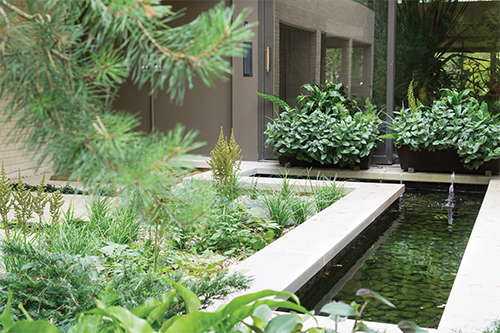
Because of the freezing temperatures in a climate like Chicago’s, it’s important for water features to look attractive even when they’re dry, says Woleben-Meade. For a high-rise condo’s patio in Chicago, for example, the designer used a sculptural vertical metal and glass water feature that’s a focal point all year long. “Water adds another visual dimension for us to work with,” Woleben-Meade says. “It makes a space feel bigger or sets a contemplative mood.”
 Tate Gunnerson is a Chicago-based freelance journalist with an equal appreciation for natural beauty and good design. He is a passionate supporter of St. Jude Children’s Research Hospital and the National Kidney Foundation.
Tate Gunnerson is a Chicago-based freelance journalist with an equal appreciation for natural beauty and good design. He is a passionate supporter of St. Jude Children’s Research Hospital and the National Kidney Foundation.
